Rosine, KY | #BluegrassTrails
Part of the mygrassisblue.com #BluegrassTrails series, on the trail of bluegrass history and its pioneers/early protagonists.
Pull up a chair, get comfy, and join the two Daves – Jnr & Snr – as they recount their September 2016 trip to the bluegrass bonanza of Rosine, and a whole lot more Bill Monroe besides.
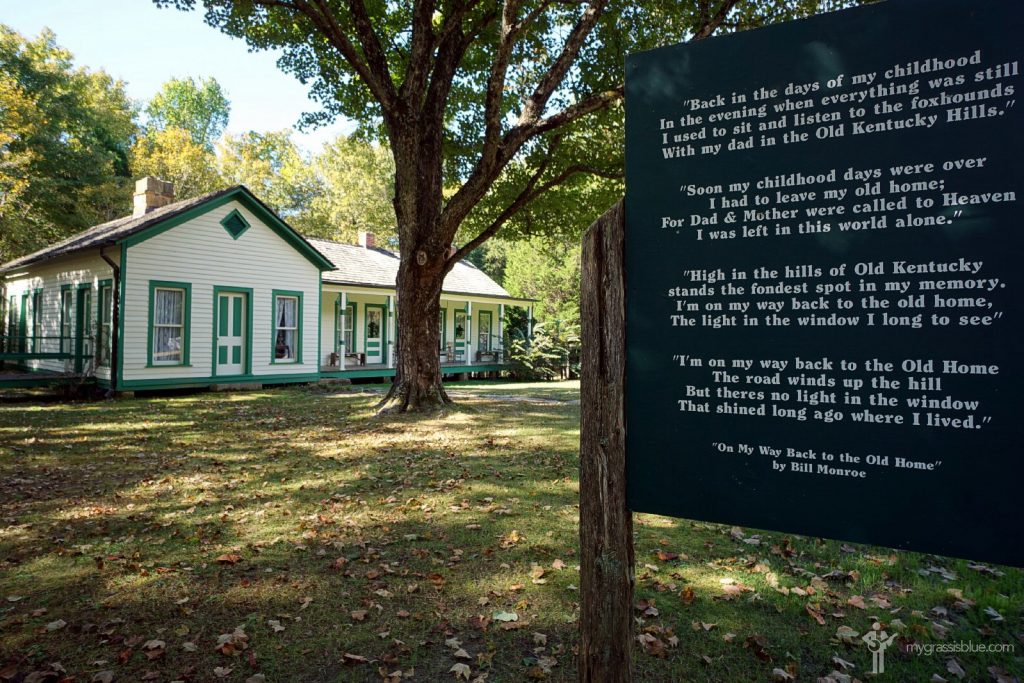
Bill Monroe‘s Old Homeplace on Pigeon Ridge, Rosine, Ohio County, Kentucky. September 28, 2016.
Bill Monroe (1911-1996) was five-going-on-six years old when the Homeplace was built in 1917, believed built to celebrate the twenty-fifth wedding anniversary of his parents, James Buchanan, a.k.a J.B., and Malissa Vandiver Monroe; married on August 2 of 1892 near Horton, Kentucky, shortly thereafter Malissa would join J.B. in living close by Jerusalem Ridge where the Monroes had settled as far back as 1832. The wood-framed house was built around the original sandstone chimney of the log cabin Monroe was born in five years earlier and which had burnt down. A young Bill Monroe spent his formative years between here and nearby Jerusalem Ridge. Although his upbringing was tough, it was happy and filled with music and there’s no doubt that it shaped his musical legacy; much of the music he would go on to create would draw on influences and experiences from his youth. It was this structure that was the homeplace he wrote about in his classic song ‘I’m On My Way Back to the Old Home’, the lyrics of which are displayed on a sign fronting the present-day Old Homeplace, lovingly and immaculately rebuilt in 2001 as part of a $3 million restoration and today overseen as a tourist attraction by the not-for-profit Bill Monroe Foundation, a wonderful organisation formed with the intention of creating a lasting memorial to the Father of Bluegrass Music and preserving the source and heritage of the original American art form that is the Monroe style of bluegrass.
Bill Monroe on His Way Back to the Old Home (5 minutes 42 seconds) |Bill Monroe spent his later years on his farm in Goodlettsville, Tennessee. It is said that Monroe attempted many times to buy his precious ancestral home, but with little success. Instead he settled for occasional pilgrimages back to the Old Homeplace. In this touching video (date unknown) we see Monroe exploring his tumble-down boyhood home with commentary, provided by the man himself, recalling those early days in the hills over Rosine. The dilapidated condition of the structure as seen in this video serves to highlight the accomplishment that was its complete restoration (according to the Bill Monroe Museum in Rosine, ‘Bill walked among the ruins of the old Homeplace knowing plans for the restoration were in the works. He sat with a painter as they mixed colors to get just the right shade of green for the trim’). The last portion of the video sees Monroe being introduced to the crowd as the Father of Bluegrass Music (from 3:10) followed by a live performance of ‘I’m On My Way Back to the Old Home’ (from 3:30) from what looks to be the stage in Bean Blossom.
Beaver Dam, KY
![]()
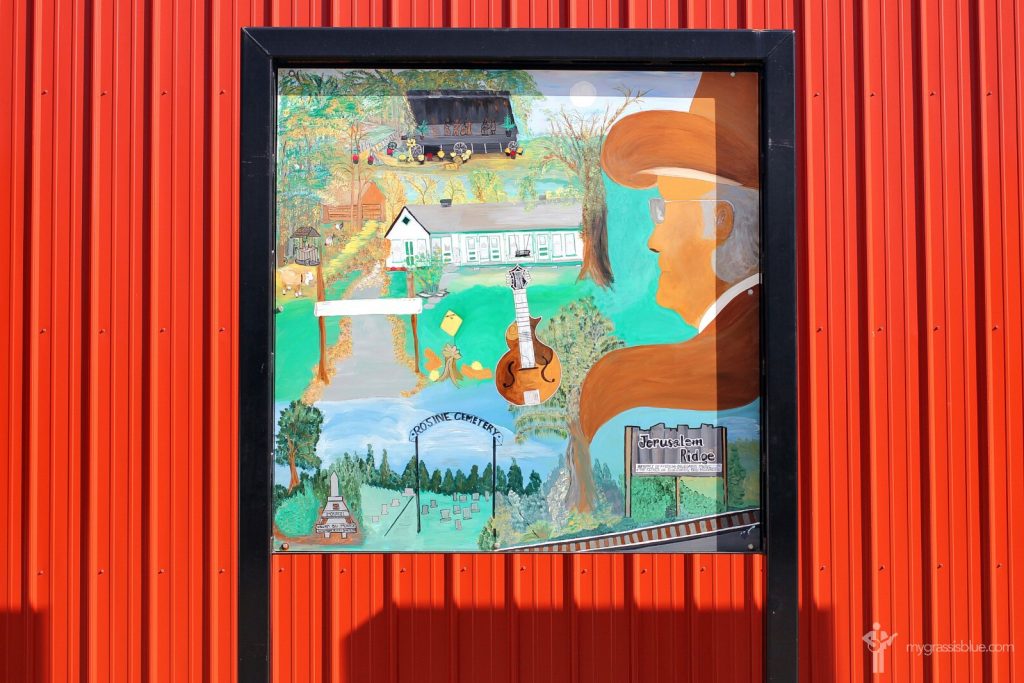
Art work off Main Street in Beaver Dam, Ohio County, Kentucky. September 28, 2016.
Beaver Dam was named after the church – the Beaver Dam Baptist Church – that predates the town itself by some 6 decades. The small town has had some rather renowned former residents, notably jockey Shelby Barnes, southern gospel family group The Crabb Family, and one Ray Chapman, the only player in MLB history to die as a result of injuries received during a game; he died aged 29 in August 1920 after being hit in the head by a pitch. We know this about Beaver Dam because all three are commemorated here, a little public space off Main Street, the centerpiece of which is a striking over-sized industrial metalwork piece of guitar and banjo (we liked that). Of course the space also makes reference to nearby Rosine and its boast as the childhood home of Bill Monroe.
Rosine & ‘Monroe Country’
![]()
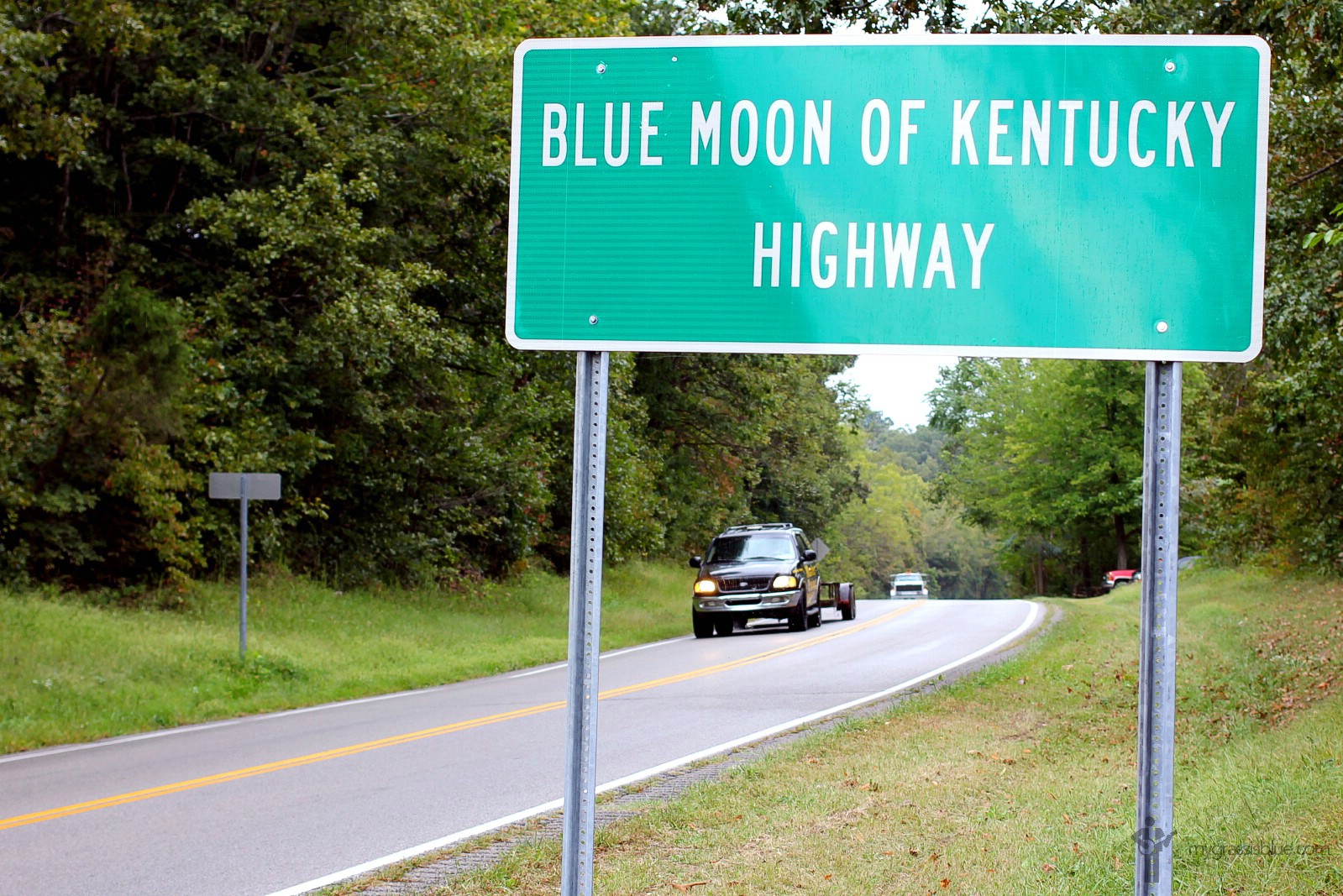
ROSINE & US HIGHWAY 62/BLUE MOON OF KENTUCKY HIGHWAY | Rosine is located in Kentucky’s Ohio County, which seems to have trademarked the tagline ‘The Home of Bluegrass’. A post office was established here as Pigeon Roost on January 16 of 1872, but the town’s names was changed to Rosine on June 10 of 1873 in honour of a Jennie Taylor McHenry, a poet who wrote under the pseudonym of Rosine. The town was incorporated on September 15, 1875 (although it is now unincorporated). It sits on US Route 62, part of which in the vicinity of Rosine is aptly named the Blue Moon of Kentucky Highway.
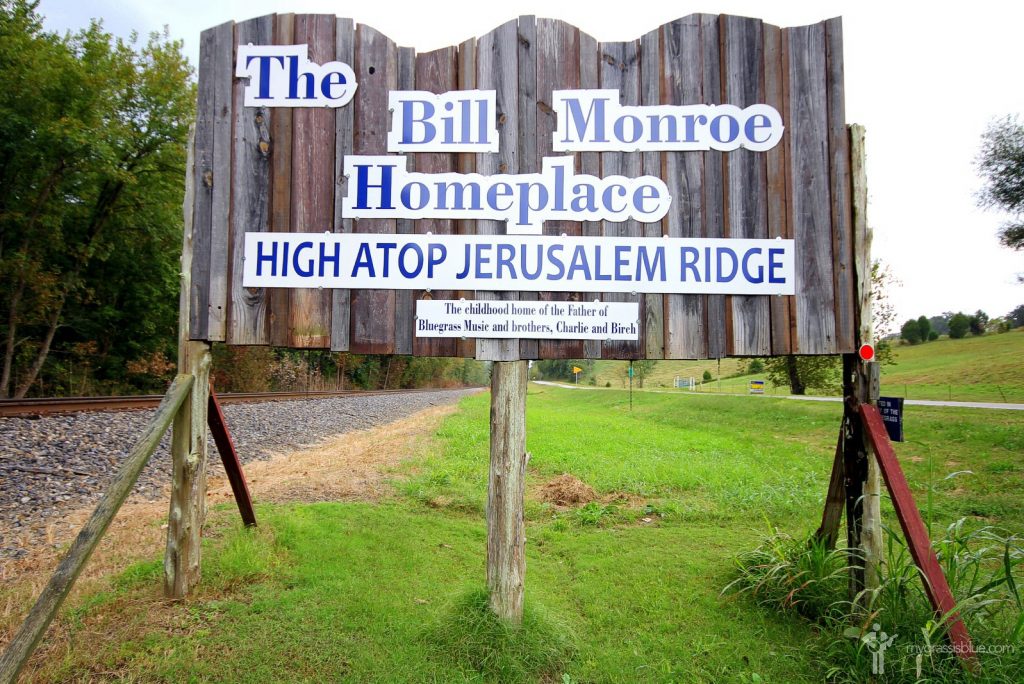
ENTERING ‘MONROE COUNTRY’ | Following the #BluegrassTrails in Rosine to ‘Monroe Country’ is easy – turn off the Blue Moon of Kentucky Highway about a mile and a half west of Rosine, past this sign, across the train tracks, through the gate, and take a short drive up windy Homeplace Lane to Pigeon Ridge Road and the Old Homeplace. Easy peasy.
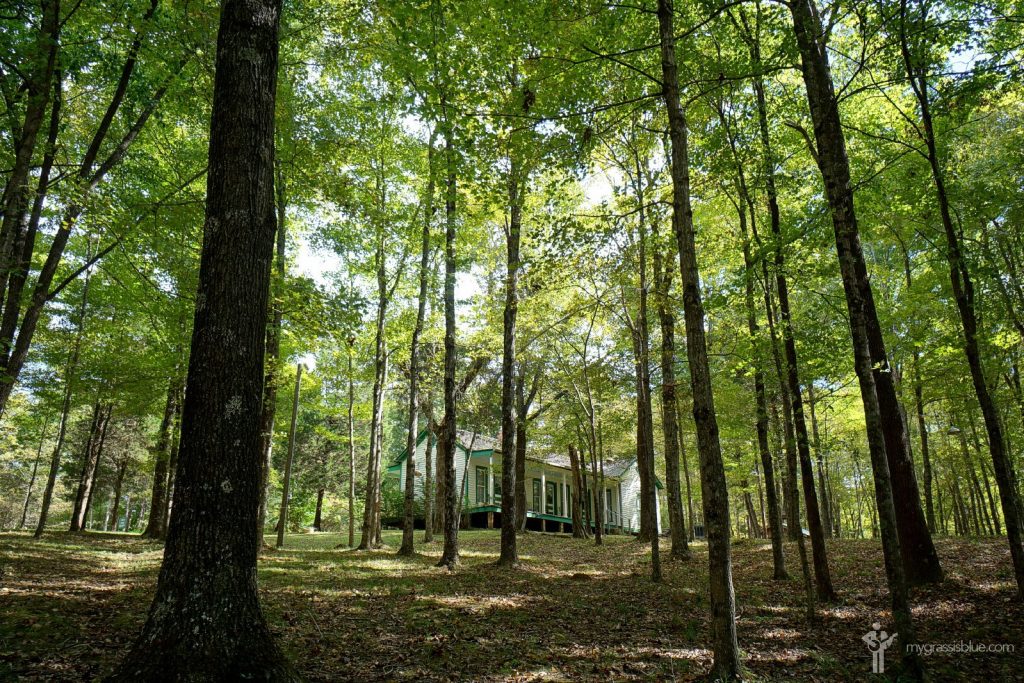
PIGEON RIDGE | Bill Monroe‘s restored Old Homeplace among the sublime serenity of the wooded hills of Pigeon Ridge.
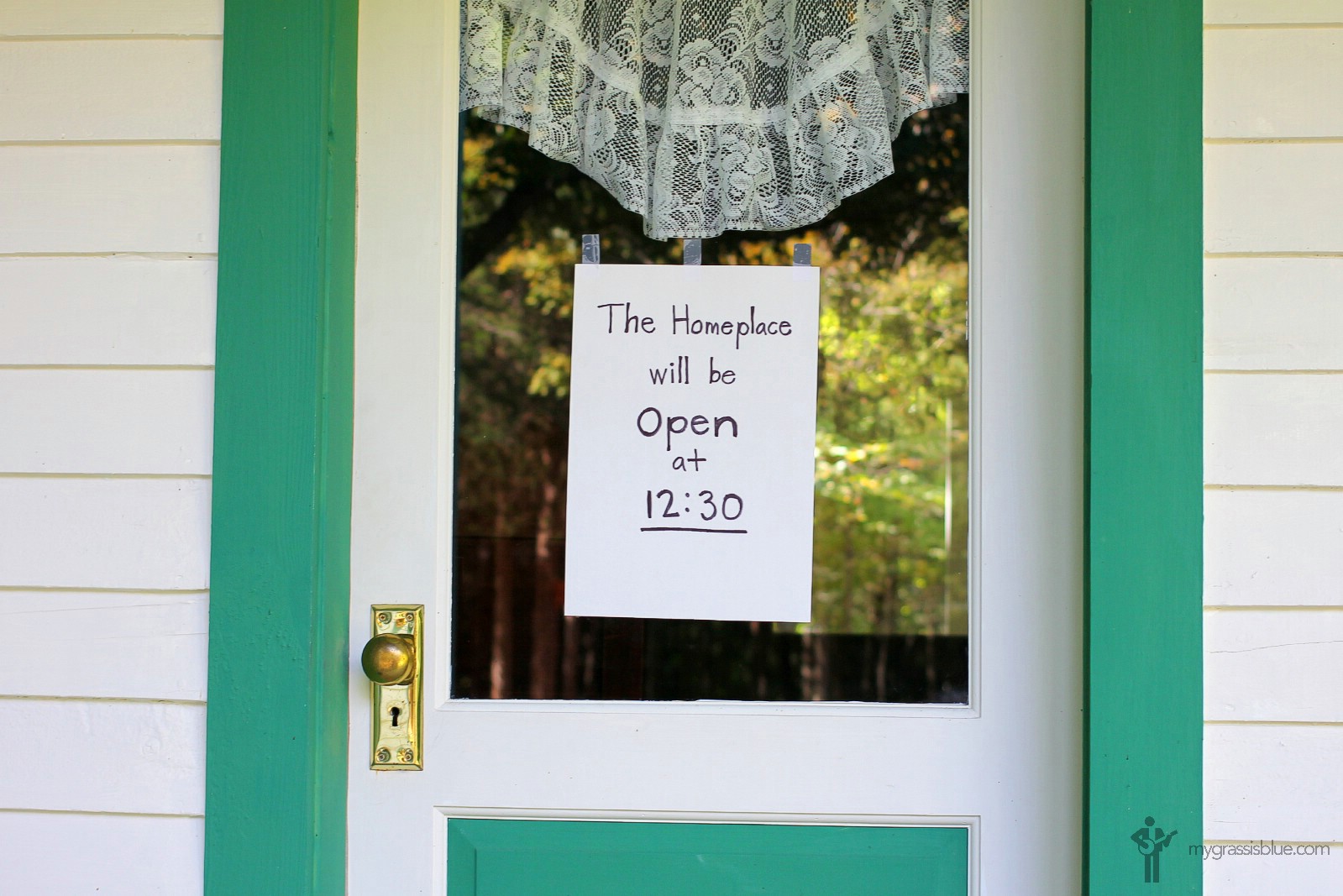
EARLY | Whoops. Too early. Arriving at the Homeplace, something of a niche attraction (you won’t find posted opening hours, a ticket office or a gift shop here), just after 10 a.m. saw us greeted by this sign posted on the front door.
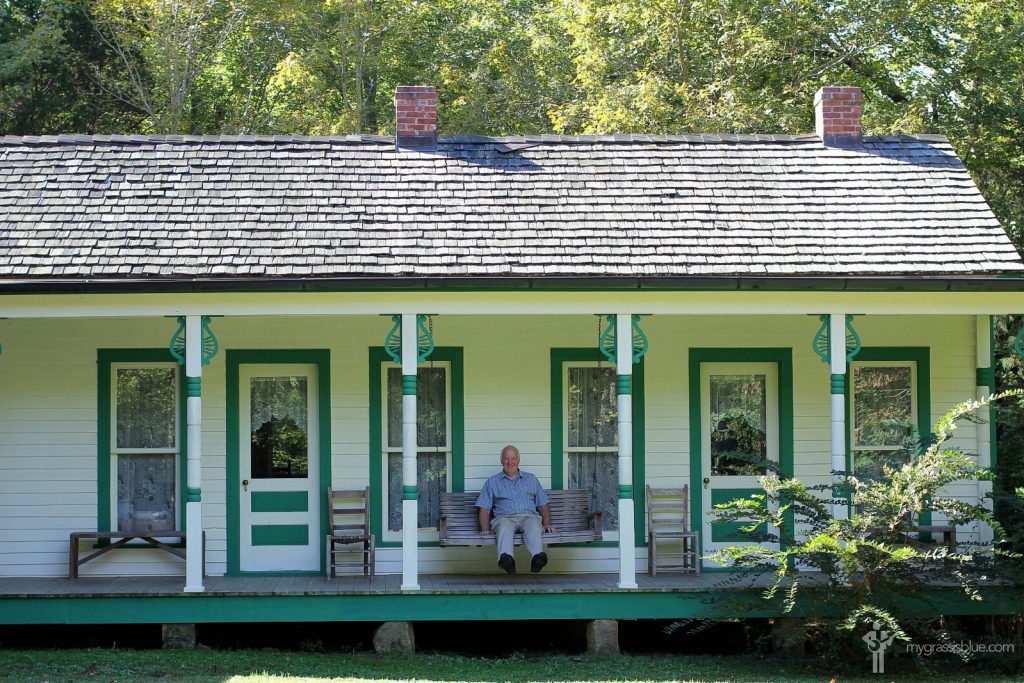
FRONT PORCH SWING | Dave Snr. passing the time by hanging out on the front porch of the Old Homeplace.
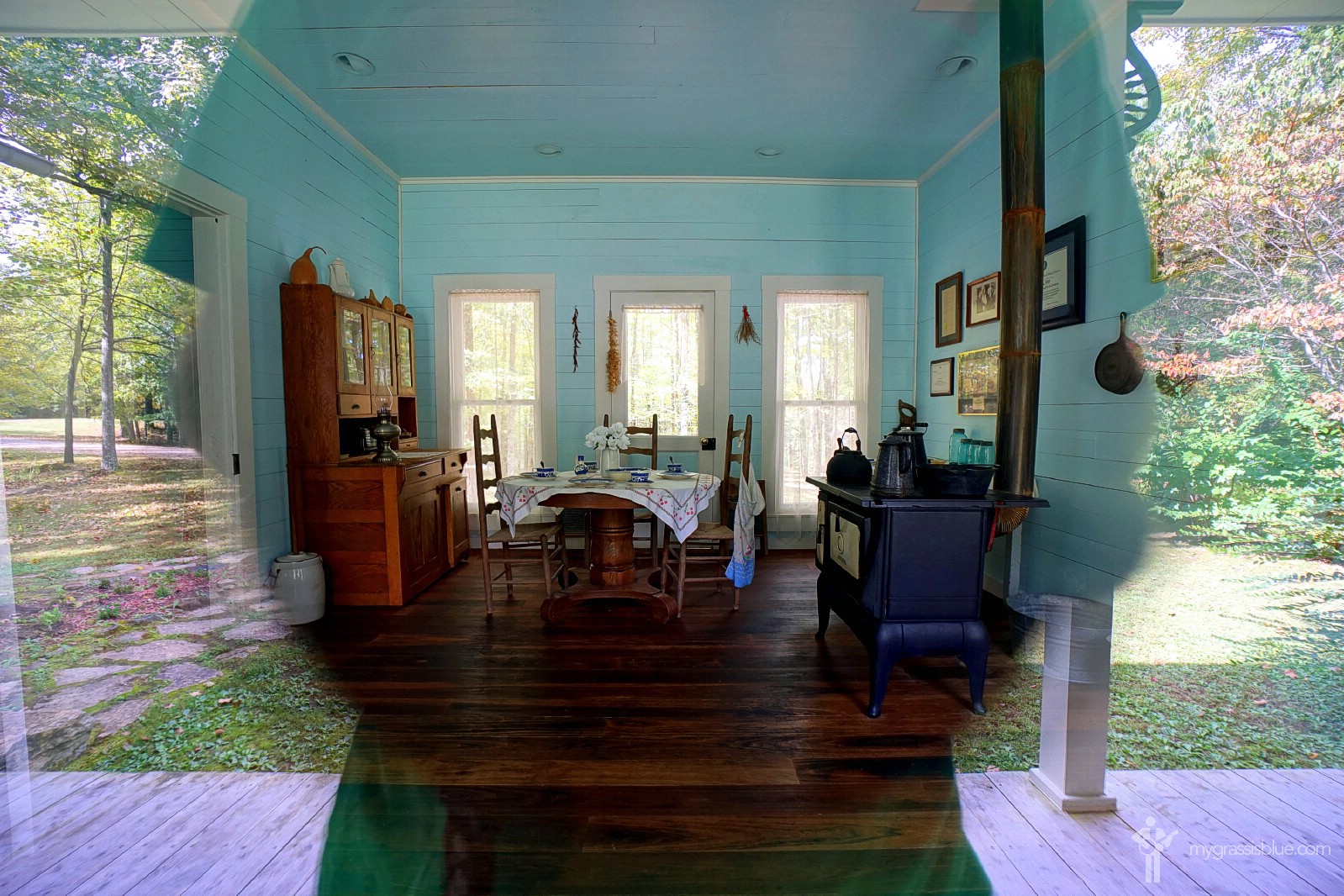
REFLECTIONS | While passing time, we had some fun playing with reflections while peering into the Homeplace through the windows of its front and rear porches.
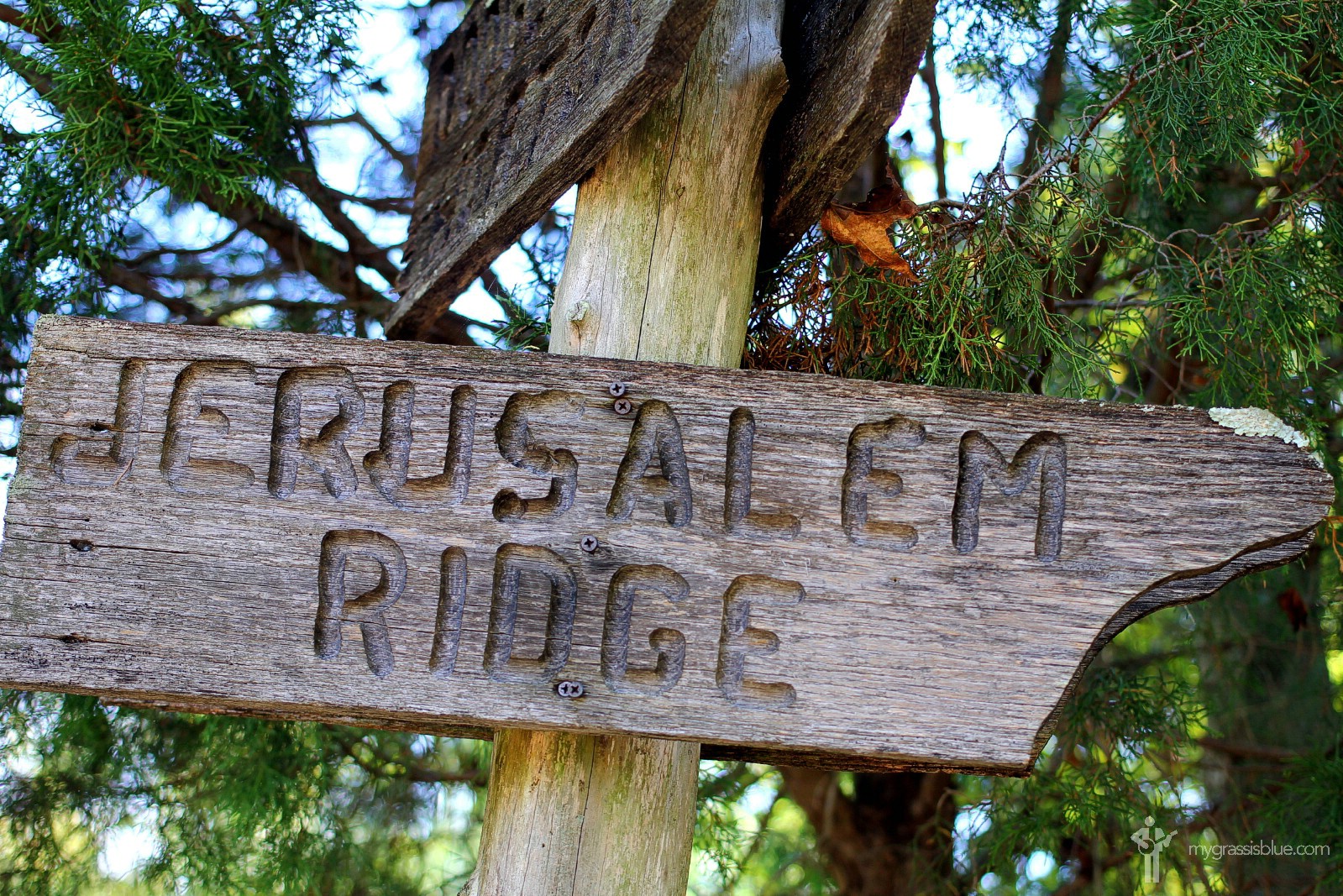
JERUSALEM RIDGE | The Monroe Homeplace, high atop Pigeon Ridge, was the centerpiece of a nearly 800-acre farm, including 40 acres on the adjoining Jerusalem Ridge, about a half mile south of the Homeplace on Pigeon Ridge and somewhere Bill Monroe called “the most beautiful place in the world”. The Monroe folk would visit the ridge to hunt and a young Bill would go up on ridge with his father J.B. to listen to the fox hounds run at night, hear stories about the old ways, and listen to the fiddle sounds of his Uncle Pen, his mother’s brother, emanating from his Jerusalem Ridge cabin. It was “the prettiest music you ever heard” according to J.B.
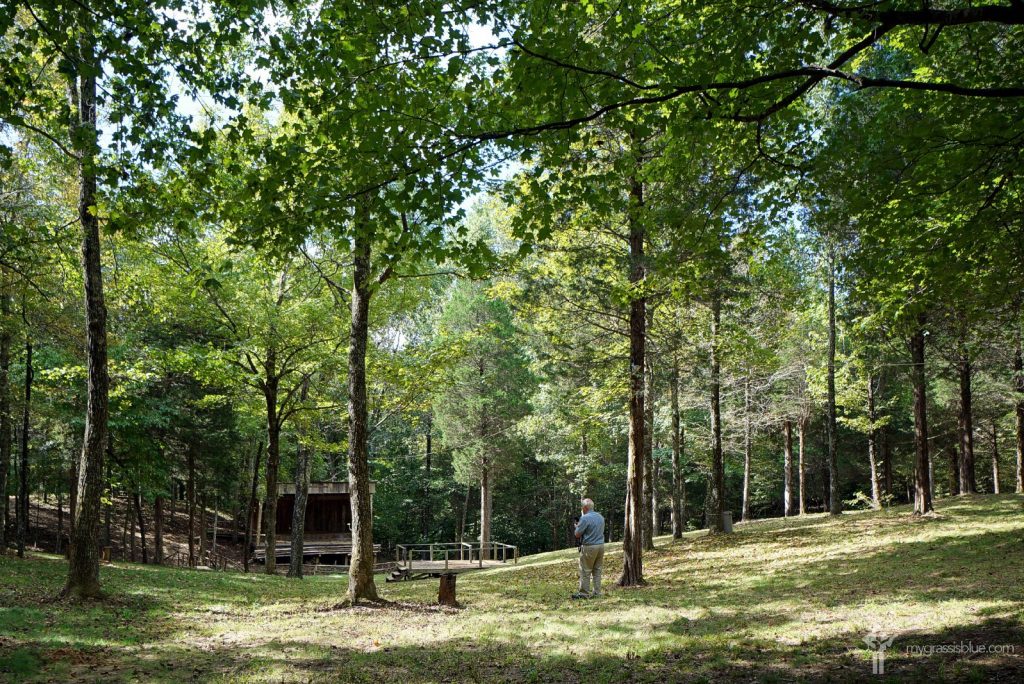
AMPHITHEATER & THE JERUSALEM RIDGE FESTIVAL | The wooded embankment behind the Old Homeplace serves as something of a natural and unique amphitheater where the Bill Monroe Foundation placed a permanent performance platform, centre stage for the (almost) annual Jerusalem Ridge Bluegrass Celebration/Festival, typically staged around now – mid-September – each year (there was no festival in 2016 or 2017). Central to the bluegrass experience and an integral part of it today, the first multi-day bluegrass music festival was held in 1965, Bill Monroe himself launching his own annual bluegrass music festival in Bean Blossom, Indiana, in 1967. Since then dozens, maybe even hundreds, of bluegrass festivals have established themselves in various parts of the US, especially in the eastern and Appalachian regions, but only one can claim to be based here at the birthplace of the music itself. Now that’s gotta get some bums on seats.

STAGE FRIGHT | Some tomfoolery. The stage was/is straight, the camera wasn’t. We should have brought the tripod.
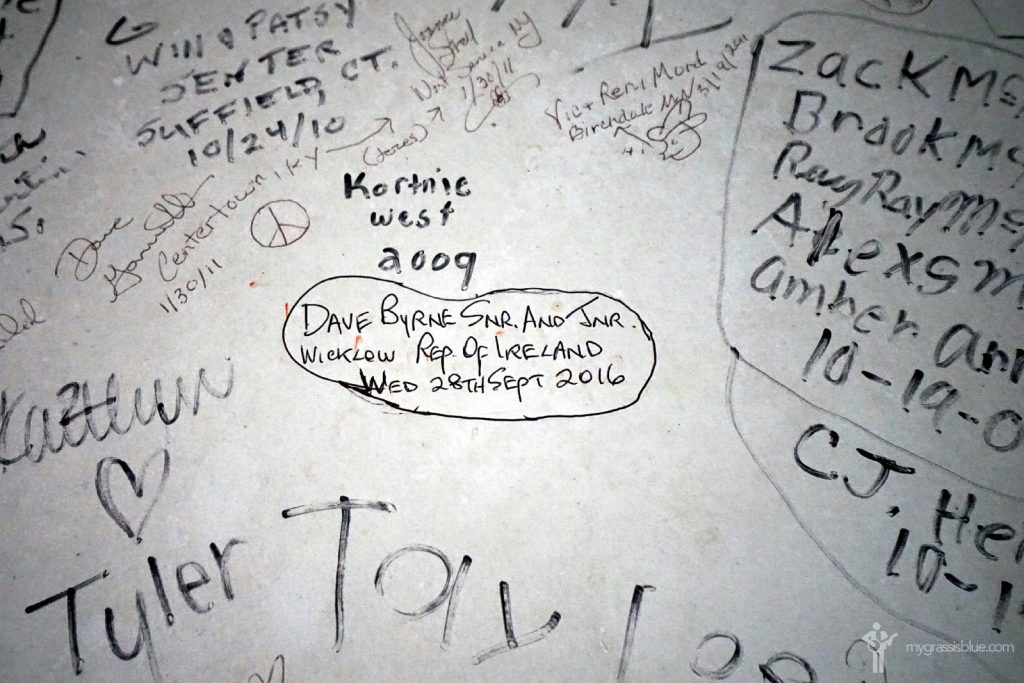
STAGE SIGNATURES | The rear of the stage is adorned with signatures of visitors who, like us, ventured to the Old Homeplace on a bluegrass pilgrimage (not to mention those who have performed on the stage down through the years). And we, like them, left our mark. mygrassisblue.com wasn’t in existence back in 2016. Had it been, we would surely have immortalised it here in a similar way.
– Reproduced from text on display in the peaceful grounds of the Old Homeplace.
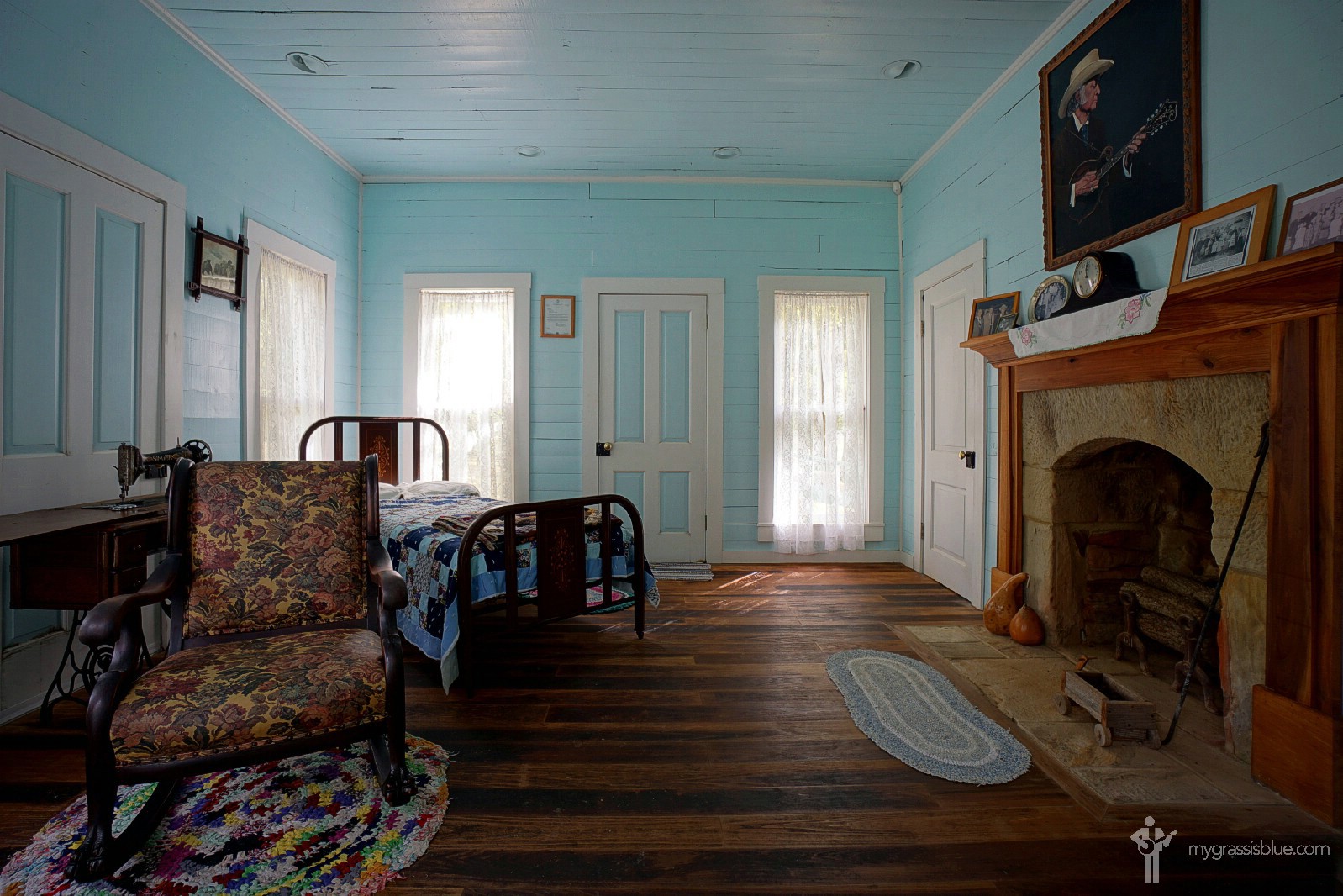
BEDROOM | Pictures in the Old Homeplace testify to the brilliant 2001 restoration job performed to get the structure from almost ruin to its present form, a faithful representation of its 1917/1918 appearance both inside and out – the work was carried out by the Leatherwood Construction Company of Tennessee. Presented today as a museum to the life and times of Bill Monroe, the five-room wooden structure is filled with early 20th century-vintage furnishings, cherished family heirlooms, and mementos from Monroe’s illustrious 70-year musical career; awards, honours, and, of course, information on the history of the musical genre born within these walls. We know these walls can sing and dance, but if only these walls could talk.
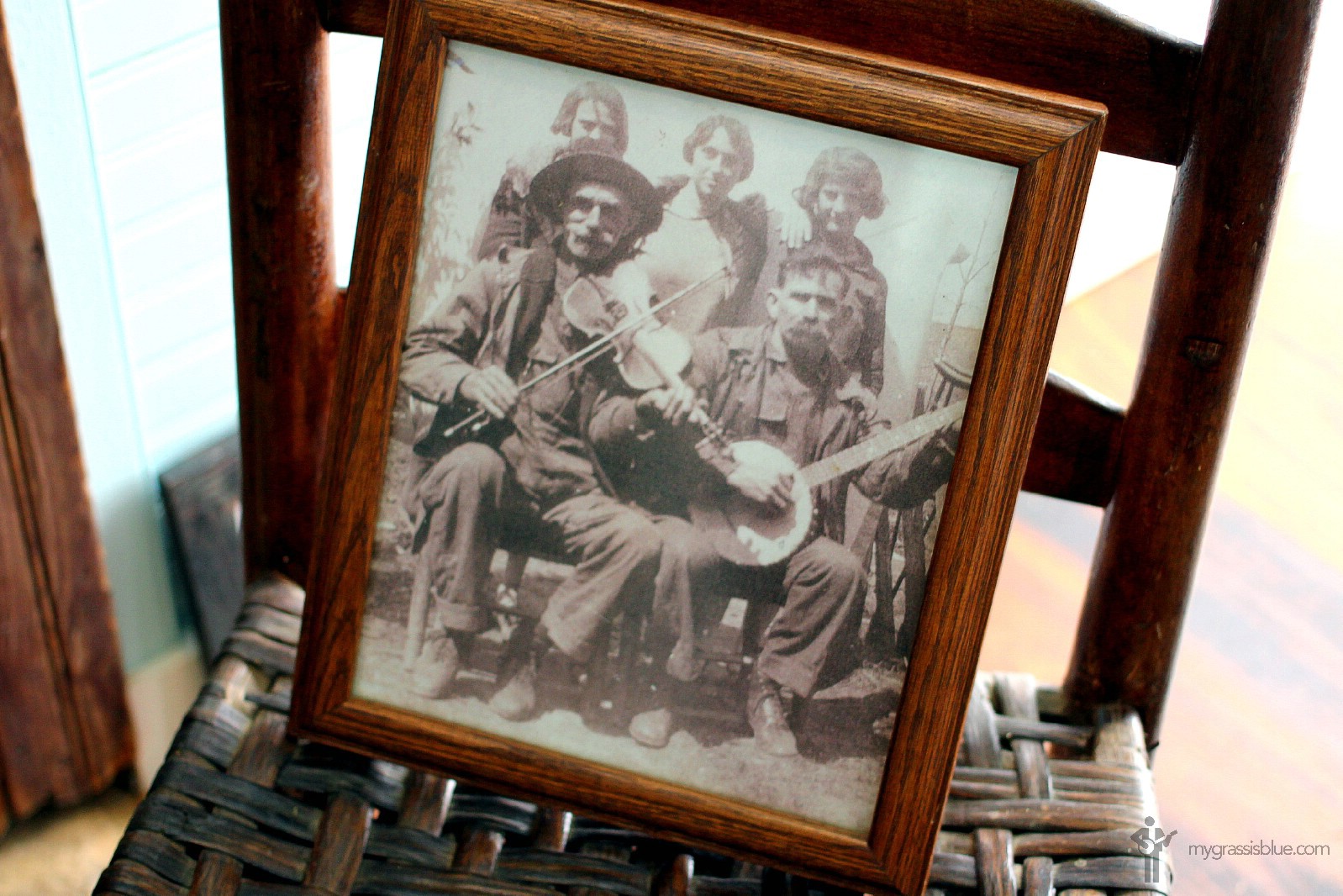
UNCLE PEN | Rare family photographs are on display all throughout the Homeplace. This picture is one of very few in existence showing Malissa Monroe’s brother, the renowned fiddler James Pendleton Vandiver, aka Uncle Pen (1869-1932), a now legendary figure who would provide a massive positive influence on a young Bill Monroe (Seen in the picture here with Uncle Pen is a local musician, Clarence Wilson. The three females in the rear are unknown.) Uncle Pen would visit the Homeplace whenever he was playing for a dance nearby, eat supper with the Monroes, and then fiddle for the children while sitting by one of the fireplaces. Listening carefully and later playing at dances with him, nephew Bill would credit his Uncle Pen, who he famously immortalised in a song of the same name, with instilling in him the all-important ability to keep time when playing music. Bill’s mother died when he was nine and his father passed away when he was sixteen. Hard times in the late 1920s eventually drove the rest of the Monroe family (Bill Monroe was the youngest of six sons and two daughters) north to Indiana to seek employment, but Bill stayed behind for two years and lived with Uncle Pen in his cabin on Jerusalem Ridge. These two years, from his sixteenth until his eighteenth year, proved to be the most crucial to Bill’s musical training; the musical exposure he received from his Uncle Pen while residing in his log cabin was intense.
– Bill Monroe
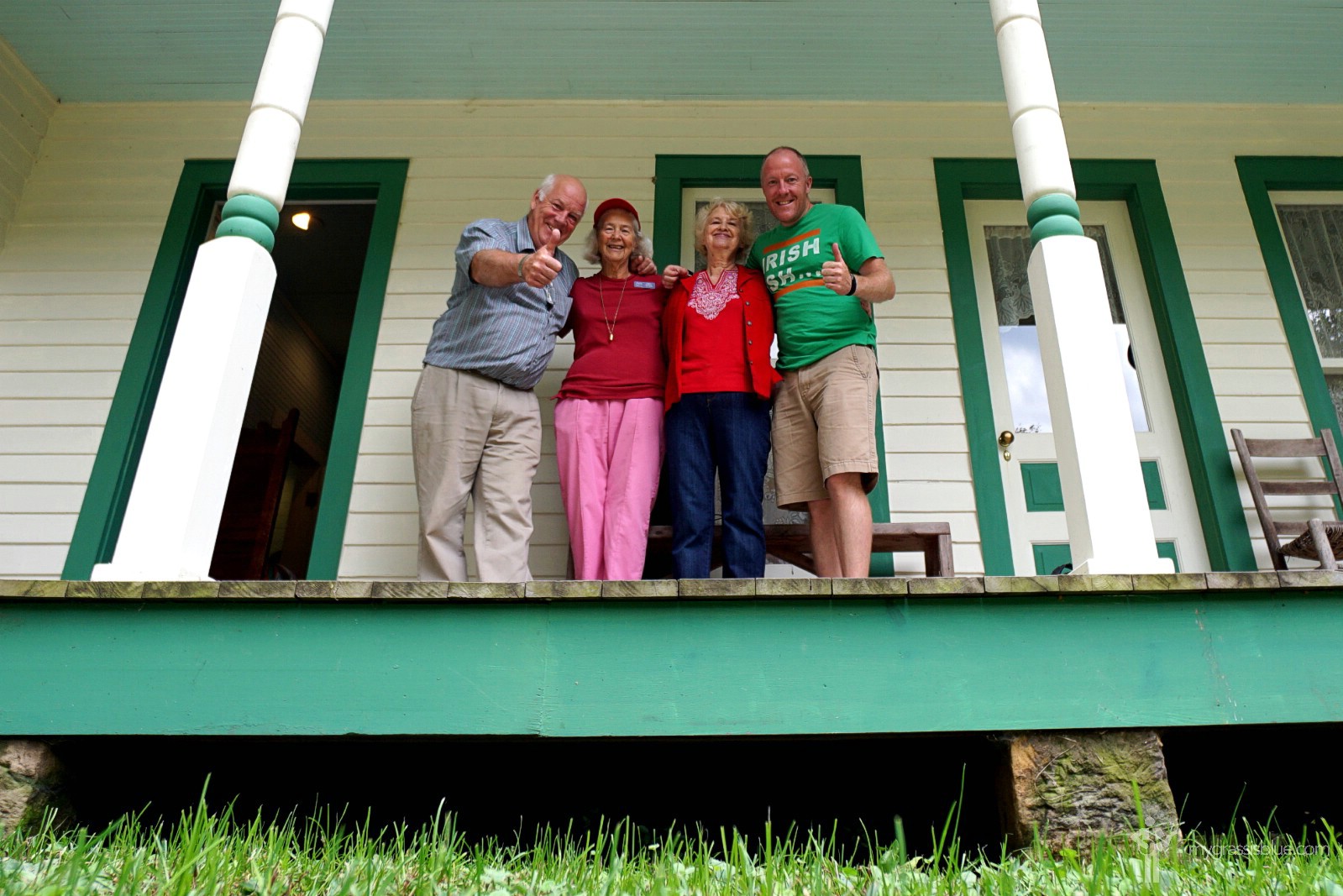
JONELL & MERLENE | Jonell (right) showed up and gave us a personal tour of the restored interior. Shortly thereafter Merlene (left) joined the party meaning we had not one but two sweet, affable and enthusiastic tour guides who were more than happy to pose with us for a picture on the front porch as we were bidding them adieu. Thank you, ladies.
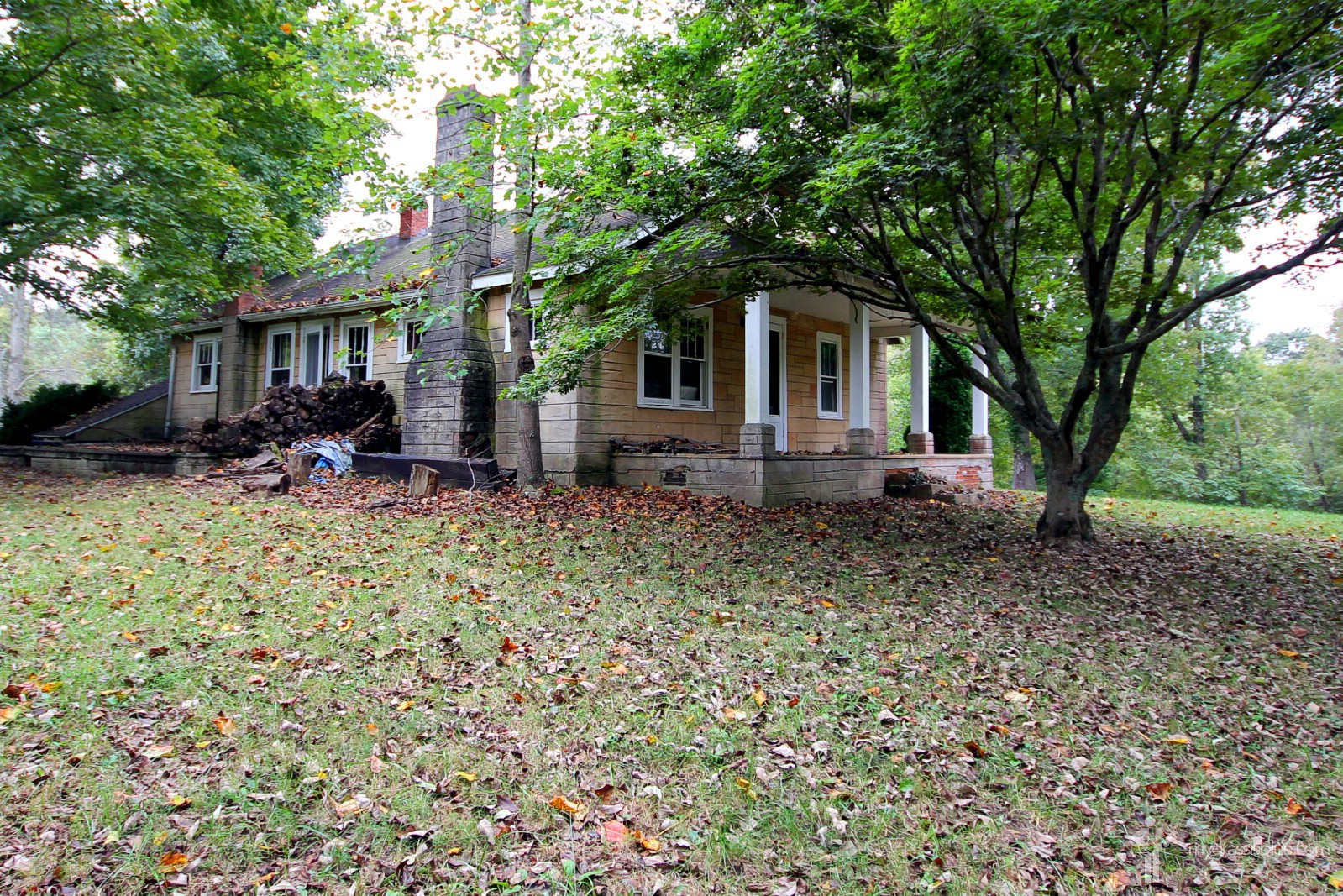
CHARLIE MONROE | Still in Monroe Country just off Homeplace Lane en route back to US Highway 62 is the abandoned former abode of Bill’s brother Charlie. Built in the early 1940s, Charlie retired here in 1957 with his first wife Betty (Miller) Monroe after his own successful career in music. He mined coal on the property until it was sold in 1964.
Rosine, KY
![]()
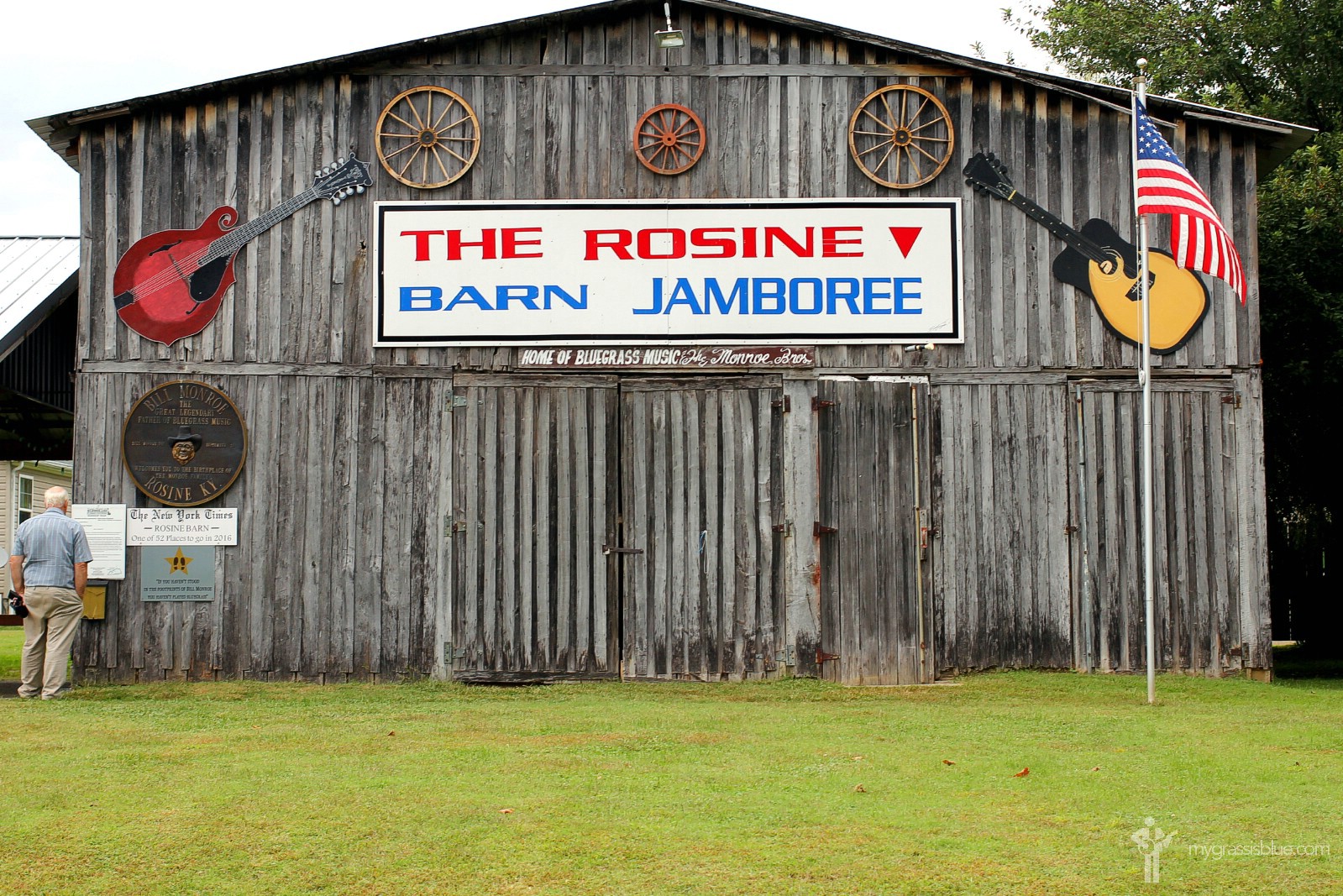
ROSINE BARN JAMBOREE | Listed on the National Register of Historic Places and selected as ‘One of the 52 Places to Visit in 2016’ by The New York Times, the Rosine Barn Jamboree is an historic rustic barn renowned for its live bluegrass, country and gospel music performances – Bill Monroe himself was a regular performer, and he played his very last show here. Held every Friday evening from March through mid-December and dubbed the ‘the best bluegrass jam in America’, it’s recommended to ‘bring your lawn chair for when seating gets scarce!’
– The Rosine Barn Jamboree’s Facebook page.
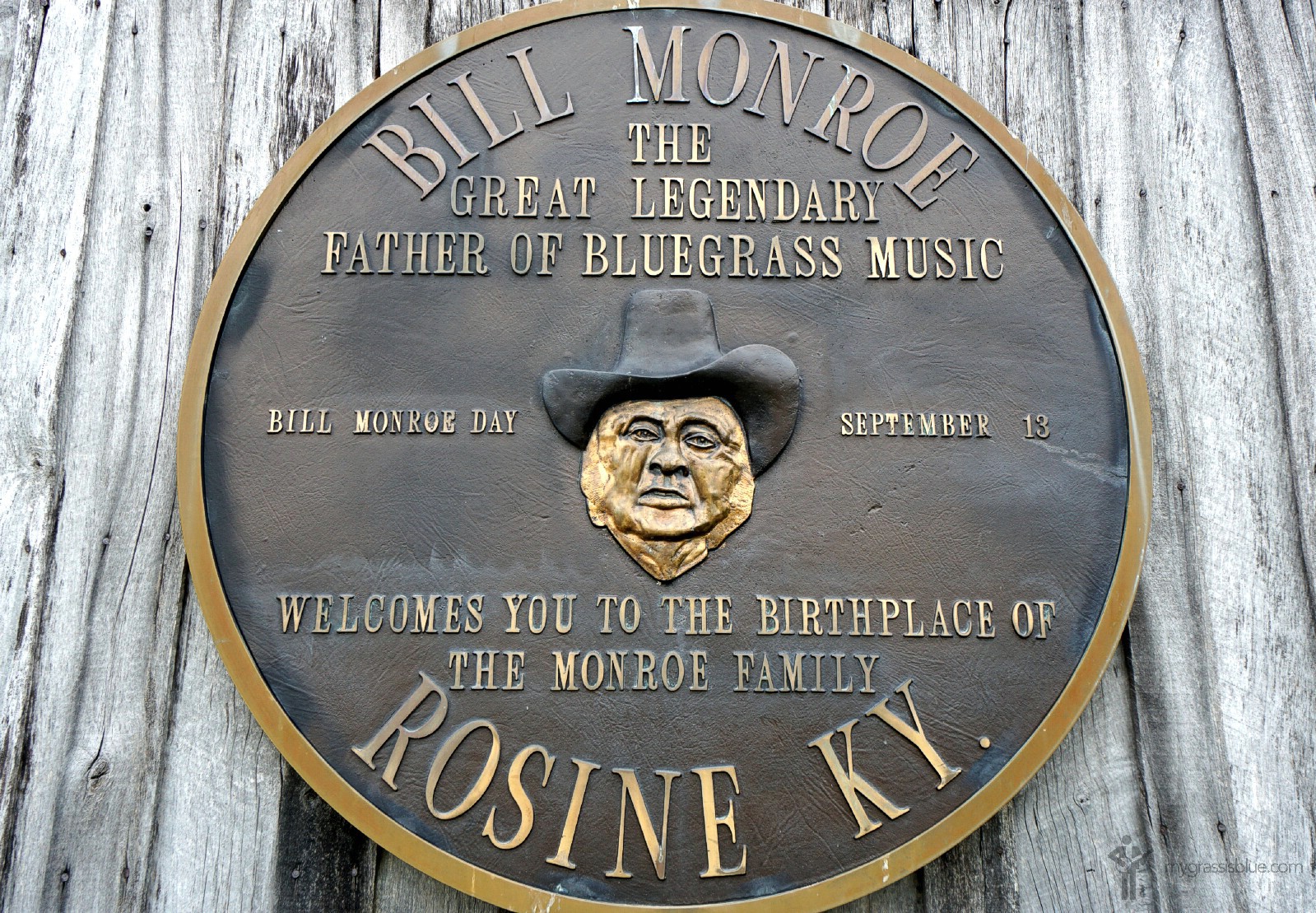
BARN JAMBOREE PLAQUE | There’s a story behind the large Bill Monroe plaque adorning the front of the Rosine Barn Jamboree that commemorates Bill Monroe Day on September 13, his birthday. A notice posted below the plaque, entitled ‘Bill’s Request’ and as told by an Eleanor Bratcher, explains:
‘Bill (Monroe) was really dear to us. The last time he came (to the Rosine Barn) was in September 21, 1995. That wasn’t hardly a year before he died. That’s whenever they unveiled the bust for him.
Dudley Cooper and some of the officials asked us what the county could do for him… so when we were down there visiting with him sitting in the living room, I said, “Bill, some of the county officials are wanting to do something for you. They want to know what you want done in Ohio County”. And he looked, and I will never forget – he smiled as if he really appreciated that. I said, “they’re wanting me to bring a message back to them what you would really like for them to do for you”. And he looked at us, Hoyt, Rosetta and Bertha was there at the time, and he said, “I’d like a plaque or a bust to be put up there in honor of me, because Ms. Bratcher, there’s really not much there that shows much respect for me. And I would like that to be put out there to recognize the Monroe family”. I said, “Bill, I’ll take the word back and tell them that’s what you want”.
So they did fix the bust and it was unveiled in September of 1995 and it liked to have thrilled him to death. He was just really happy he had got recognized in his home town.
The bust is on the front of the barn and is supposed to stay there from now on. I’m really glad that he lived long enough to see that.’

BILL MONROE’S GRAVE | We couldn’t leave Rosine without visiting the great man’s grave in Rosine Cemetery. Flanking Bill Monroe’s grave you’ll also find the last resting places of all members of the Monroe family including his parents and his musician brothers, Birch and Charlie.
– James William Monroe, 1997, as inscribed on Bill Monroe’s grave
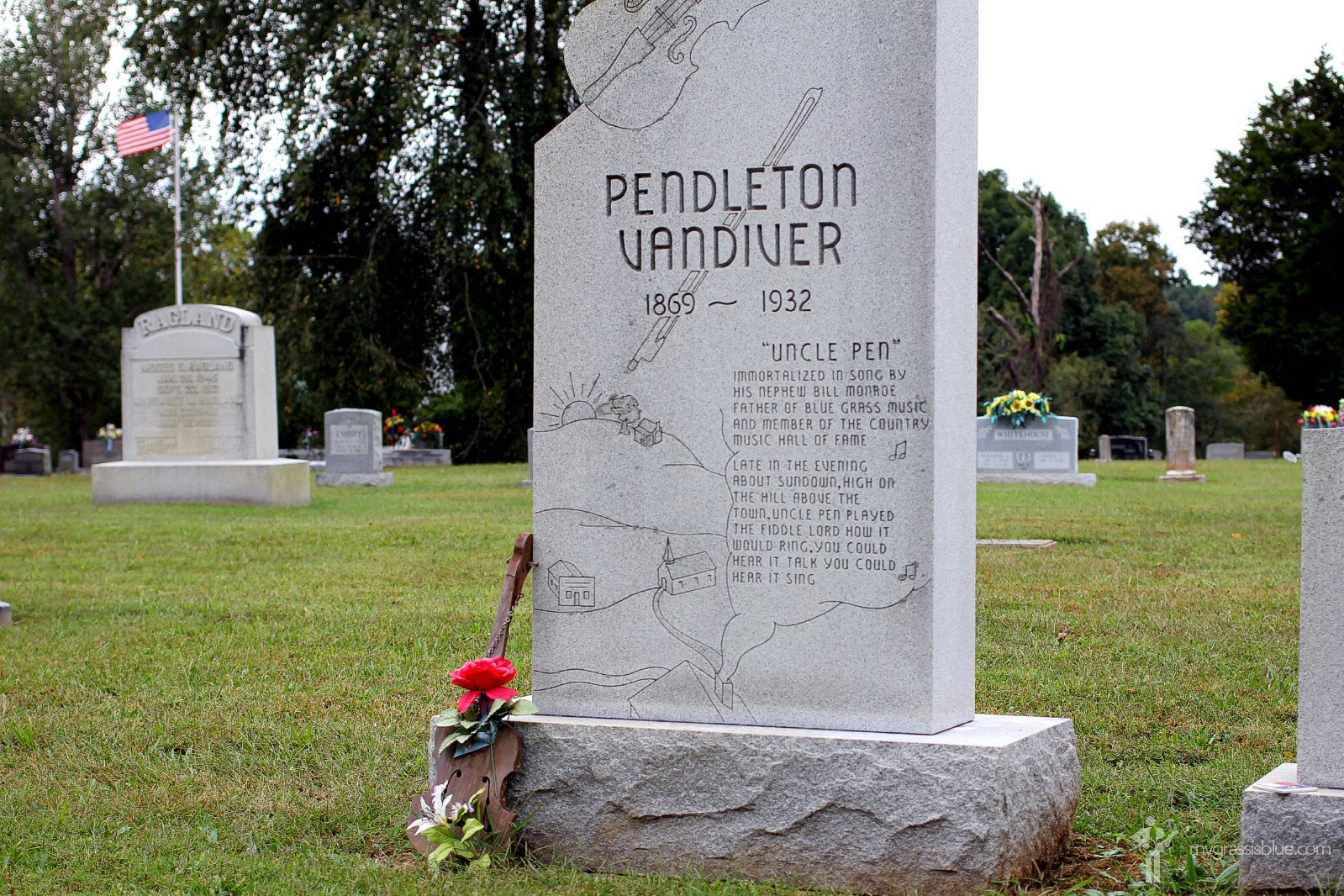
UNCLE PEN’S GRAVE | Uncle Pen’s grave in Rosine Cemetery. The headstone was unveiled by Bill Monroe during a small ceremony on September 16, 1973.
– Bill Monroe
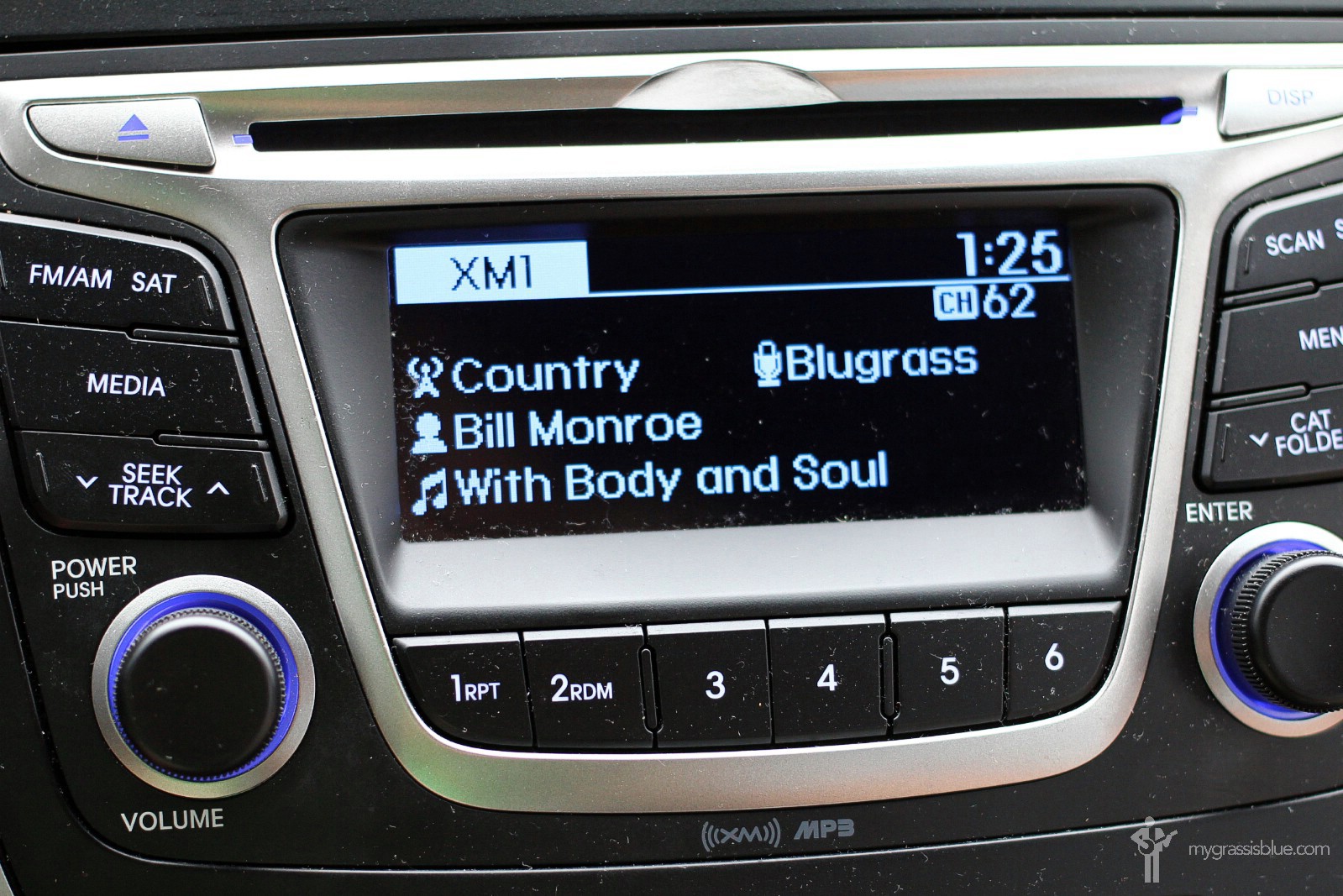
BIG MON CHANNEL 62 | (Well,) what do you know! How very apt. Leaving Rosine Cemetery and the grave of Bill Monroe and the man himself is on SiriusXM’s Bluegrass Junction.
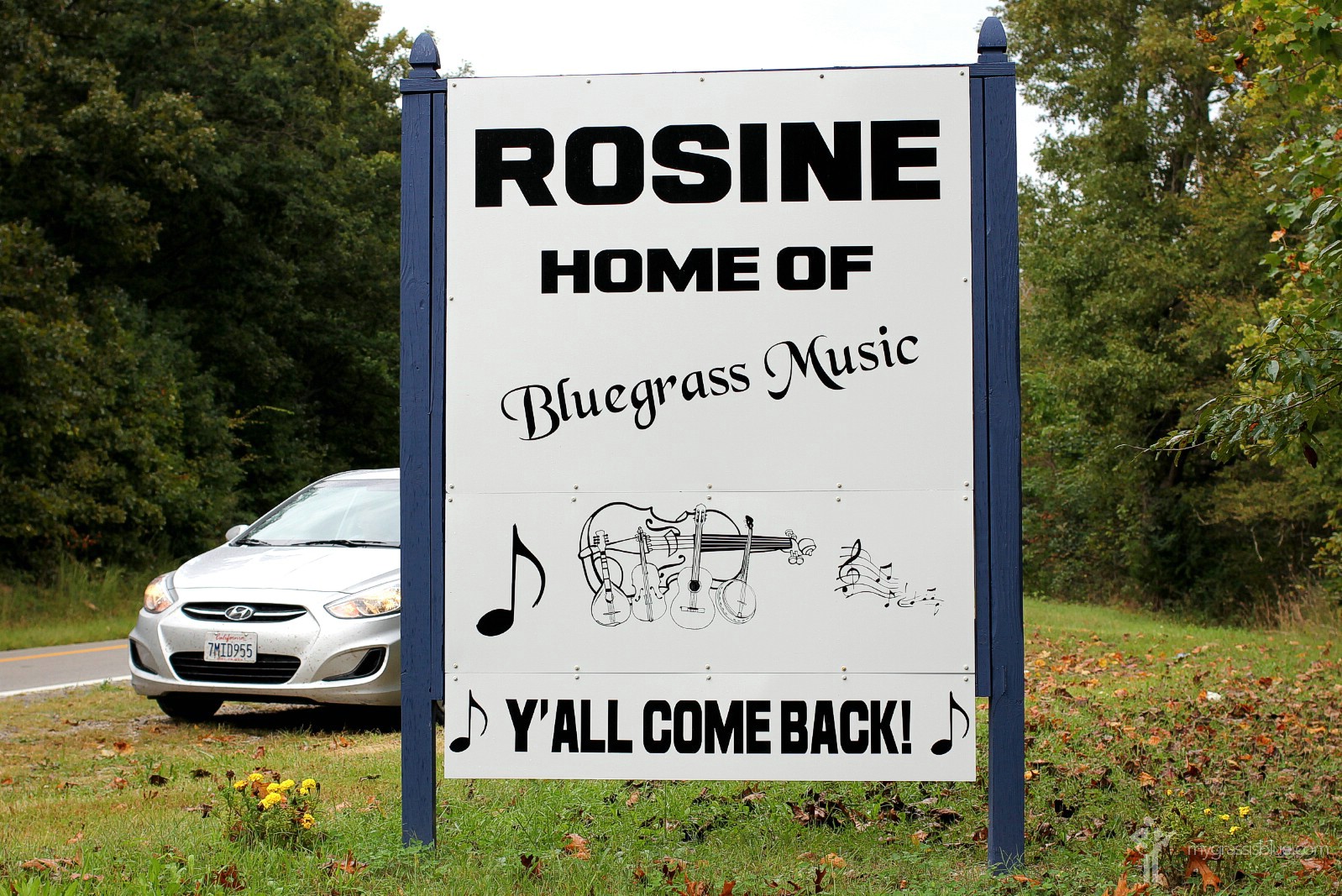
ROSINE RETURN | Ya’ll come back! Yes, yes we will, Rosine. Eventually.
Elsewhere | IBMA HOF BIO
Suffice it to say, Bill Monroe was a member of the First Class of inductees into the International Bluegrass Music Hall of Fame when he was inducted 1991, along with a certain Earl Scruggs and Lester Flatt. So his plaque has been hanging in the hall a tad longer than most. Something tells us Bill liked the thought of that.
Bill Monroe | IBMA Hall of Fame Bio
Bluegrass Touches – An Interview with Bill Monroe by Charles Wolfe, in Ewing, Tom, The Bill Monroe Reader, 2000.
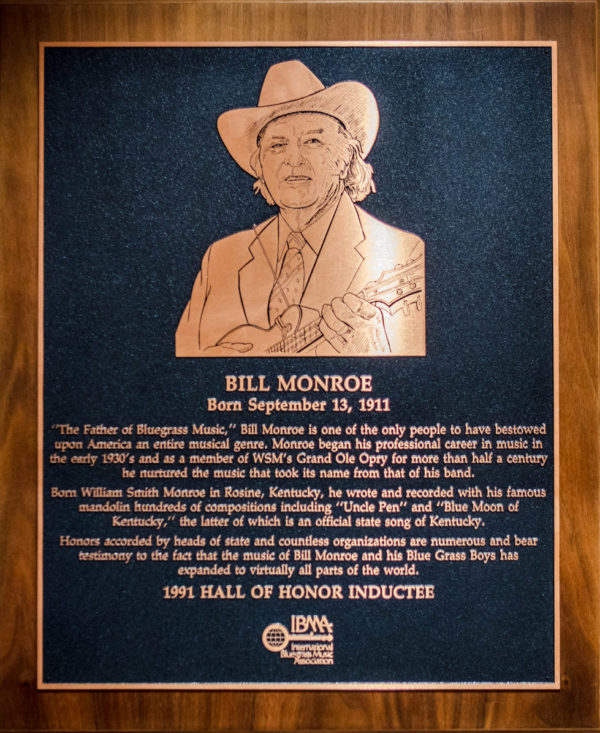
IBMA Hall of Fame Induction| 1991
Born | September 13, 1911 in Rosine, Kentucky
Died | September 09, 1996
Primary Instrument | Mandolin
Remembered as the “Father of Bluegrass Music,” Bill Monroe is better understood as a master chef or chemist, blending earlier musical elements into an exciting new form. Bill often spoke of wanting to bring “ancient tones” into his sparklingly innovative music. These included fiddle and bagpipe sounds imported from the British Isles, African-American blues and holiness gospel, American Great Awakening hymnody, as well as hill country dance music and the thrilling new rhythms of hot jazz. His distinctive contribution was blending these influences with an equal measure of his own passionate soul and artistic inspiration to create and evolve what would become a genre of its own, named in honor of Monroe’s band, the Blue Grass Boys. It can fairly be said that every bluegrass band on earth draws inspiration from the musical contributions of Bill Monroe.
Bill Monroe was the youngest of eight children born to a western Kentucky farm family in Rosine, Ohio County, not far from Owensboro. Suffering from crossed eyes that weren’t corrected until his teens, the young man endured teasing and vision difficulties which haunted him for life.
– Bill Monroe: King of BlueGrass Music, interview with Doug Benson in Ewing, Tom, The Bill Monroe Reader, 2000.
The family loved music, and Bill proved an apt performer on mandolin, guitar, and vocals. He left school in the fifth grade, began work as a laborer at 11, and was orphaned at 17. Soon after, he joined older siblings in the Chicago area, where he found work in the oil industry. A few years later, he and brothers Charlie and Birch became exhibition square dancers for the WLS Barn Dance. Charlie and Bill left their day jobs in 1934 to form the Monroe Brothers, the hottest of the mandolin-guitar duets popular in that decade.
Radio, concerts, and recordings, mostly in the Carolinas, launched the duo to prominence with songs such as “What Would You Give in Exchange for Your Soul,” “Drifting Too Far From the Shore,” and “New River Train.” The brothers quarreled and split in 1938. Bill decided to modernize and enlarge his musical vision with a larger string ensemble, which he eventually named the Blue Grass Boys in honor of his home state. In 1939, on the strength of his adaptation of Jimmie Rodgers’ “Mule Skinner Blues,” he was inducted to the Grand Ole Opry on WSM, Nashville, as a life member.
Over the next five decades, Bill Monroe led a band through which scores of talented musicians served their apprenticeship. Among Blue Grass Boys alumni who made their later mark in bluegrass, country, folk, and other genres were Clyde Moody, Howdy Forrester, Stringbean (David Akeman), Carl Story, Chubby Wise, Lester Flatt, Earl Scruggs, Benny Martin, Jim Eanes, Don Reno, Vassar Clements, Mac Wiseman, Jimmy Martin, Gordon Terry, Carter Stanley, Sonny Osborne, Bobby Hicks, Kenny Baker, Don Stover, Eddie Adcock, Dale Potter, Buddy Spicher, Del McCoury, Bill Keith, James Monroe (Bill’s son), Peter Rowan, Richard Greene, Byron Berline, Doug Green, and Roland White.
The sound that came to be known as bluegrass wasn’t born fully formed. It constantly evolved as Bill Monroe merged his creative inspirations with the talents that passed through his band. In the late 1930s and early 40s, the Blue Grass Boys played in a raggy, syncopated, and improvisatory style that evoked black string bands of an earlier era and the simultaneously emerging form of western swing. During this phase, the fiddle became the central voice of the instrumental ensemble, and high-pitched solos, duets, trios, and quartets provided a rich variety of vocal material.
With Earl Scruggs’ entry into the Blue Grass Boys in 1945, bluegrass music first took on the classic five-piece ensemble for which it has ever since been recognized: plucked string bass, steel-string guitar, mandolin, fiddle, and banjo played in the three-finger style that Scruggs made wildly popular. During the three years that Bill Monroe, Lester Flatt, Earl Scruggs, Chubby Wise, and Howard Watts were together, their performances and Columbia recordings set a standard that have ever since been recognized as a high water mark for the form.
– Bluegrass Touches – An Interview with Bill Monroe by Charles Wolfe, in Ewing, Tom, The Bill Monroe Reader, 2000.
After Flatt & Scruggs split off to form their own group, Bill Monroe took his sound in new directions. Autobiographical songs, faster tempos, a more dynamic instrumental attack, and eventually double and triple-fiddle arrangements characterized the great music the band made for Decca in the 1950s. In his fifties and a veteran performer, Bill Monroe wasn’t content to rest on his laurels. As the folk music craze swept North America, the traditional roots embedded in his music brought it to the attention of new audiences in the colleges and urban centers outside the heartland of the Appalachian region and mid-south where bluegrass had flourished.
– Bill Monroe interview by George Gruhn, in Ewing, Tom, The Bill Monroe Reader, 2000.
The 1970s and 1980s saw the proliferation of bluegrass festivals, labels, radio programs, and media. Bill Monroe was the recognized patriarch of an entire genre of music, which was by then spreading worldwide. In the final quarter century of his life, Bill Monroe received the recognition and approval of peers for which he had hungered as a child. The broader world of the arts and culture recognized Bill Monroe as one of the leading innovators and musical figures of the twentieth century. The “Father of Bluegrass Music” died a few days short of his 85th birthday after a series of health challenges, through which he continued to perform for appreciative audiences almost to the end.
– Reproduced from the Bill Monroe entry on the Hall of Fame Inductees page of the Bluegrass Music Hall of Fame & Museum website
Elsewhere | Video
Bill Monroe: Father of Bluegrass Music (1 hour, 31 minutes) | Essential viewing, Steve Gebhardt’s 1993 TV movie Bill Monroe: Father of Bluegrass Music sees John Hartford chat to Bill Monroe about his early years and career. Features performances by Monroe & his Blue Grass Boys, Lester Flatt, Emmylou Harris, Paul McCartney, the Osborne Brothers, Dolly Parton, Ricky Skaggs, Marty Stuart, John Hartford, not to mention a once-in-a-lifetime Blue Grass Boys reunion. It also includes rare ’90s performances from Monroe’s final years including many of the greatest songs such as ‘Uncle Pen’ and ‘Muleskinner Blues’.
The Life And Times Of (1 hour, including adverts) | This now defunct The Nashville Network (TNN) autobiography on Bill Monroe was produced as part of the TNN’s ‘The Life And Times Of -‘ series. Dated to the mid-1990s, it’s grainy and only one audio channel is working, but it’s as comprehensive as you might expect. The documentary includes input from Bill Monroe himself; fellow performers, among them Sonny Osborne, Tom Ewing, Mac Wiseman, John Hartford, Ricky Skaggs, Emmylou Harris, and Chubby Wise; family members, including son James Monroe and Bertha Monroe, one of Monroe’s 2 sisters; and noted music historian Neil V. Rosenberg.
Tribute – Backstage at the Grand Ole Opry (57 minutes, 40 seconds) |This Backstage at the Grand Ole Opry episode was recorded as a tribute to Bill Monroe on Saturday September 14 1996, five days after his passing. The first half of the video is another autobiographical look at his life and legacy with input from, among others, Ricky Skaggs and Vince Gill. Of all the tributes paid to Monroe, it’s probably host Bill Anderson’s words that are most touching (from 25:16). The second half of the video (from 29:00) is a ‘Grand Ole Opry Live’ segment emceed by Ricky Skaggs and featuring his band Kentucky Thunder and with contributions from Larry Stephenson, Vince Gill and the then Blue Grass Boys, the very last Blue Grass Boys ensemble. The tribute ends with all mucking in on a rousing rendition of ‘Blue Moon of Kentucky’ (from 54.45). (57 minutes 40 seconds)
TNN’s Nashville Now (6 minutes 6 seconds) | A real nugget, this footage, VHS capture of a now defunct The Nashville Network’s Nashville Now programme from the 1980s, sees Bill Monroe recounting to host Ralph Emery the story of the acquisition of his famous 1923 F5 Gibson Lloyd Loar mandolin (serial number 73987), purchased for $150 from a Florida barber shop in the early 1940s. Now safely residing behind glass in the Country Music Hall of Fame in Nashville, the clip also details the repair of the mandolin by Gibson after it was damaged.
WHAS-TV Louisville Tonight (8 minutes 48 seconds) | A Bill Monroe profile produced by WHAS-TV in Louisville, Kentucky, for their ‘Louisville Tonight’ segment. Steve Sweitzer, who uploaded the video, elaborates: ‘Anyone who is a fan of Bluegrass will enjoy this profile of the father of Bluegrass. One of the highlights of shooting this story was visiting Bill’s childhood home – abandoned but still standing, and seeing Uncle Penn’s cabin. I’ll never forget the day Bill Monroe’s bus pulled up to WHAS’s front door and Bill and the band came to the conference room to see this and some of the pieces we’d done on his Bean Blossom Bluegrass Festival. In the early 80’s I worked as a photographer and later, as a producer for Louisville Tonight at WHAS-TV in Louisville, Kentucky.‘
Backstage at the Grand Ole Opry (8 minutes 50 seconds) | Not one but two (whispering) Bills. Bill Monroe with his Blue Grass Boys featured on Backstage at the Grand Ole Opry on an Opry Saturday night. Asking the questions is a young-looking Bill Anderson. Includes an awesome backstage performance of Kenny Baker’s fiddle instrumental ‘Road To Columbus’ (from 2:11) and ‘My Florida Sunshine’ from the Opry stage (from 6:25).
The Weekly Special, 1986 (7 minutes 17 seconds) | ‘A treasure trove of Bill Monroe video that has never been seen before… anywhere’ is how this video is introduced. It features footage (and insights) from 1986 of Monroe on his Tennessee farm and from the 21st Bean Blossom festival, including a few words from festival performers Sharon White and Doug Dillard.
Bobby Bare Interview, 1984 – Part 1 (6 minutes 27 seconds) | Bill Monroe interviewed by country star Bobby Bare in 1984. Click here for Part 2.
A Mandolin and a High Tenor Voice: Bill Monroe (6 minutes 7 seconds) | Focusing on the formation of the Bean Blossom Festival in Indiana, this video is an informative look at the timeline of events that transpired following Monroe’s 1929 departure from Rosine as an 18 year and his career path from there through to the formation of the very first Bean Blossom Festival in June 1967.
Tros Televisie, 1996 (9 minutes 29 seconds) | A portion of a show exploring the the origins of country and bluegrass music produced by for Dutch TV and initially broadcast in 1996, it features footage of Bill Monroe talking about, among other things, his upbringing, his musical family, Elvis cutting ‘Blue Moon of Kentucky’, and the purchase of his mandolin from a Florida barbershop in 1942.
Bill Monroe Stories
Just for laughs is all! In 2014 Ricky Skaggs assembled in one room a crack squad of bluegrass behemoths for a recording of Country’s Family Reunion’s ‘Simply Bluegrass’, available today as a 4 DVD/episode boxset (well recommended). Some of those present, including Ricky himself, Bobby Osborne, Doyle Lawson, Ronnie Reno, Del McCoury, and Larry Cordle, share humorous Bill Monroe tales from the past some of which have thankfully found their way to YouTube (although evidently, parts 1 and 2 have gone AWOL).
Part 3 (of 7) (4 minutes 58 seconds) | A Ryman Bluegrass Night performance with Bill Monroe, Earl Scruggs, Benny Martin, Ricky Skaggs, and Roy Huskey Jnr. (Ricky Skaggs); ‘There’s only one Bill in this outfit’; and ‘I play around that’ (Del McCoury)
Part 4 (of 7) (4 minutes) | ‘It’s like a different country over there’ (Doyle Lawson); NYC donuts (Ricky Skaggs); and ‘Well it ain’t the mandolin!’ (Bobby Osborne)
– Bill Anderson, Country’s Family Reunion’s ‘Simply Bluegrass’
Part 5 (of 7) (5 minutes 41 seconds) | ‘Right there’s your problem’ (Ronnie Reno); ‘He’s ruined every fiddle player in this town’ (Bobby Osborne), Turkey in the Straw (Ricky Skaggs); and ‘you have a pillow?’ (Doyle Lawson)
Part 6 (of 7) (5 minutes 19 seconds) | ‘Jimmy Martin don’t even believe in Santa Claus’ (Ricky Skaggs); ‘It must be hard… I can’t do it’ (Ronnie Reno); Girlfriends (Bobby Osborne); and ‘I never heard it sung that way before’ (Del McCoury)
Part 7 (of 7) (2 minutes 11 seconds) | The Flat Black Hat (Larry Cordle)
Elsewhere | Online
The Bill Monroe Foundation
Campbell Mercer’s Bill Monroe Foundation is the non-profit organisation responsible for the restoration and operation of the Old Homeplace as well as the overseers and promoters of the Jerusalem Ridge Bluegrass Celebration/Festival, all in the commendable name of preserving the source and heritage of the original All-American art form that was born in the hills over Rosine. Numerous disputes with local landowners, Kentucky’s Ohio County (who officially own the five-acre Monroe Homeplace), and Bill Monroe’s son James, over the proposed $1.2 million purchase of Monroe’s famous Gibson F-5 Lloyd Loar mandolin and Bill Monroe naming rights, the latter resulting in a lawsuit which the foundation ultimately won, means the organisation seems to have had a stressful time of it since its inception. While the foundation doesn’t seem to have a website (they are probably too busy fighting fires), they are active on Facebook.
The website for the Bill Monroe Foundation’s Jerusalem Ridge Bluegrass Celebration/Festival isn’t going to win any fresh content awards – as we type, it hasn’t been subjected to an edit in over three years, July 2017, and only then to confirm the bad news of there being no festival for September of that year. That said, you may still consider dropping by for some history on Bill Monroe and the festival, with a few pictures posted from past gatherings. Oh, they are on Facebook, too (and that is updated regularly).
We were somewhat surprised that there wasn’t one already in existence, a museum dedicated entirely to the life and legacy of Bill Monroe and the early foundations of bluegrass music, but they were working on putting that right when we were in town (September 2016), soliciting donations or enticing patrons to ‘Buy A Brick!’ for the building’s Blue Moon Walkway to help with costs. A project of Ohio County and the Ohio County Tourism Commission, the museum has since opened (in April of 2018) and we’re looking forward to getting back to Rosine again some day to check it out. In the meantime we’ll continue to pay visits to their website and Facebook page.
– www.billmonroemuseum.com
This was quite the undertaking. For 365 days straight – from October 1, 2010 through September 30, 2011 – Richard Thompson of Bluegrass Today undertook the research of the life of Bill Monroe and presented it in a chronological series of posts detailing ‘births and deaths; recording sessions; single, LP and CD release dates; and other interesting tidbits.’ It makes for some good reading, and lots of it too. You can check out the first post from October 1 (World Bluegrass Day), 2010, and take it from there. (Tip: change the number in the URL — from 1 to 2 to 3 to 4 etc. — to progress, or enter any number between 1 and 364 for potluck – 348 and 344 will take you to the days Monroe was born and died respectively).
– Richard Thompson, Bluegrass Today‘s ‘I’m Going Back To Old Kentucky #344’, September 9, 2011


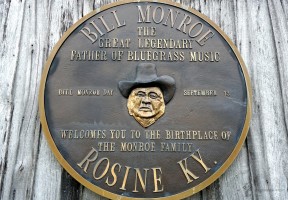
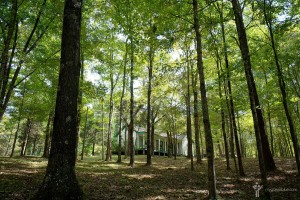
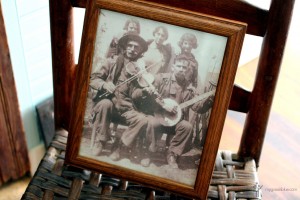
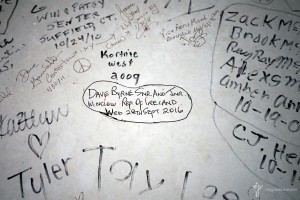
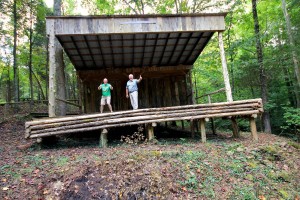

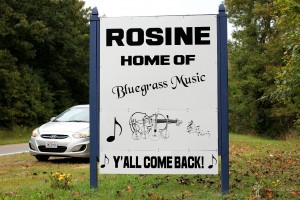
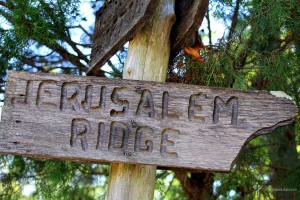
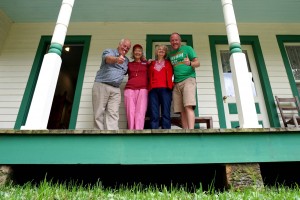
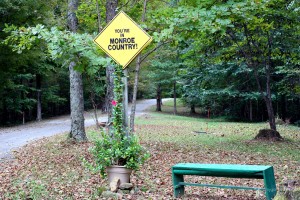
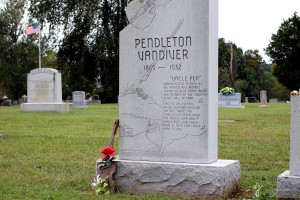

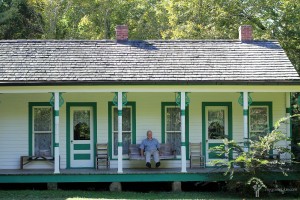
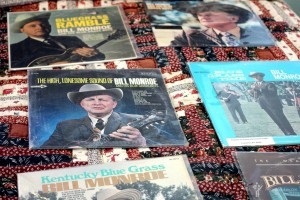
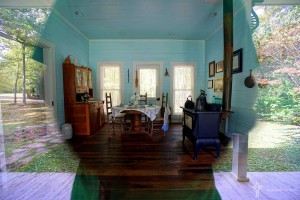
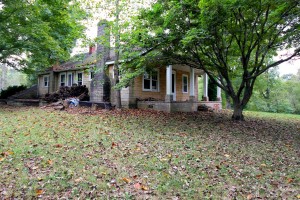
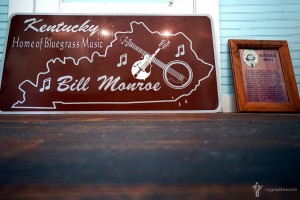
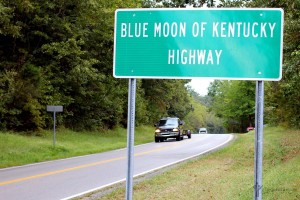
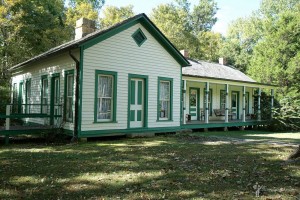
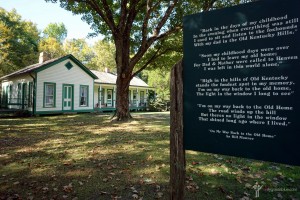
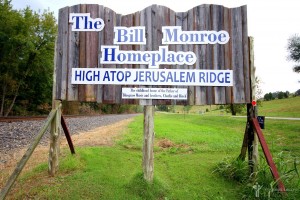
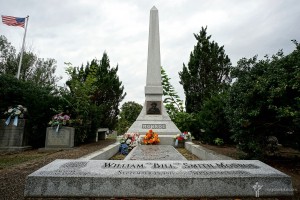
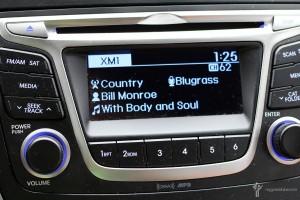
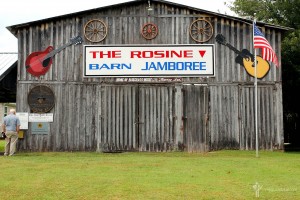
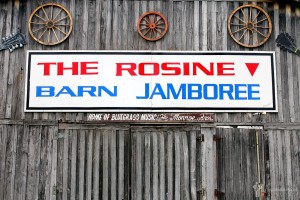
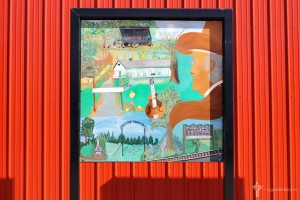
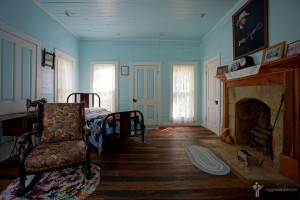
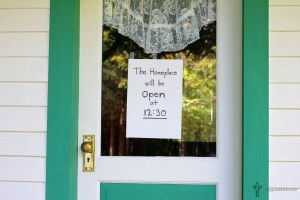
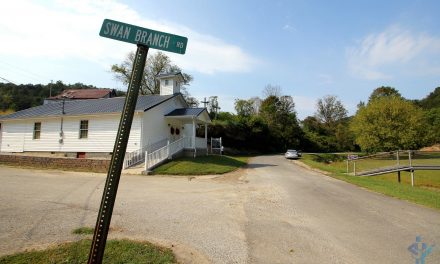
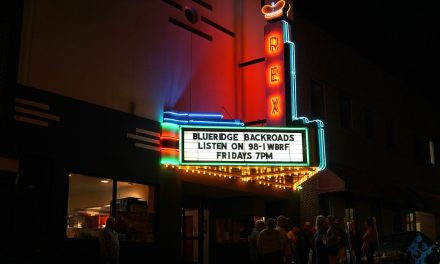
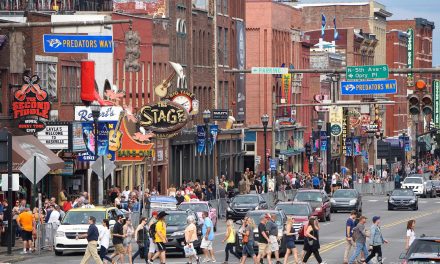


0 Comments